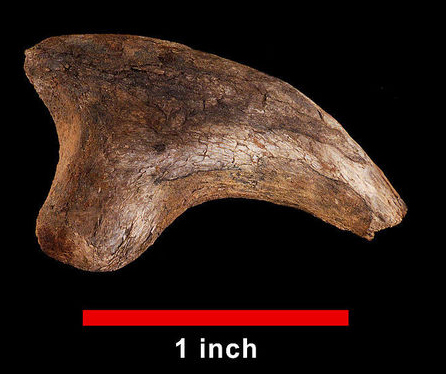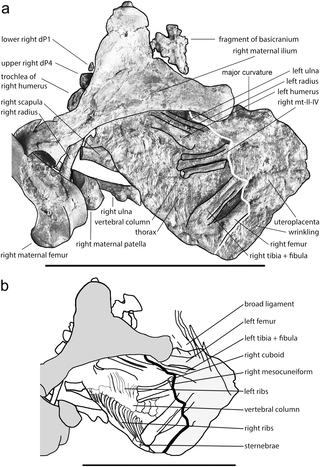Meat-Eating Dinosaurs Once Roamed Minnesota
The American State of Minnesota might border North and South Dakota but despite the treasure trove of dinosaur fossils from the Peace Garden State (North Dakota) and the Mount Rushmore State (South Dakota), the Land of a Thousand Lakes (Minnesota) has yielded only a couple of dinosaur fossil finds to date.
Theropod Dinosaur Claw Bone
However, that may be about to change as researchers from the Science Museum of Minnesota, based in Saint Paul, have announced the discovery of a theropod dinosaur’s claw bone. This is only the third documented dinosaur fossil discovery from Minnesota.
Minnesota Dinosaur Claw

Cretaceous theropod Claw from Minnesota.
Picture credit: Mark Ryan, Science Museum of Minnesota
Fossil Claw
The lack of dinosaur fossils, or indeed Mesozoic fossils in general can be explained by the fact that the rocks that may have held such fossils have been eroded away. Extensive glaciation in the north, central parts of the United States removed much of this material and indeed it is the action of glaciers that led to the unique geology and landscape of much of this part of America. In addition, for much of the Mesozoic, this part of America was underwater.
The fossil claw that measures approximately four and half centimetres in length when measured with the curvature of the claw taken into account, was found at the Hill Annex Mine, part of the extensive iron ore rich Mesabi Iron Range in north-eastern Minnesota.
Minnesota’s Cretaceous Past
Although it is difficult to assign a dinosaur family to this fossil, palaeontologists from the Science Museum of Minnesota have suggested that it is the claw from a theropod dinosaur and that it dates from the Late Cretaceous, around 90 million years ago (Cenomanian/Turonian faunal stages). Informed sources have stated that this is only the third documented dinosaur fossil found from this State. Although many famous dinosaurs are known from the United States, the fossils of these long, extinct creatures are not spread uniformly across America. In fact, more than a dozen States in the Union have no record of dinosaur fossils whatsoever.
With the discovery of a partial femur (thigh bone) from a theropod dinosaur last year, Washington State become the 37th U. S. State to have fossils of the Dinosauria recorded within its boundaries. This prompted Everything Dinosaur team members to produce a map identifying which States in America had dinosaur fossils and which did not.
To read more about which States have dinosaurs: Washington State the 37th U.S. State with a Dinosaur.
Unable to Identify the Genus
Researcher at the Science Museum of Minnesota, John Westgaard explained that it was not possible to identify a dinosaur genus, but when questioned further he suggested that the fossil claw could have belonged to a Velociraptor-like dinosaur.
A spokesperson from Everything Dinosaur stated that it was not possible to be more specific about the fossil specimen but as the claw has been dated to around 90 million years ago, this was a significant discovery as little is known about the fauna of North America from this part of the Cretaceous.
To read about the discovery of the dinosaur thigh bone from Washington State: Washington State’s First Dinosaur.
Highlighting Minnesota’s Cretaceous Past
The other Minnesota dinosaur fossil finds are equally fragmentary and also date from the Late Cretaceous. An unknown genus of duck-billed dinosaur is known from a few bones and teeth.
Everything Dinosaur stocks a range of replica dinosaur claws and dinosaur teeth: Dinosaur Claws and Dinosaur Teeth.



